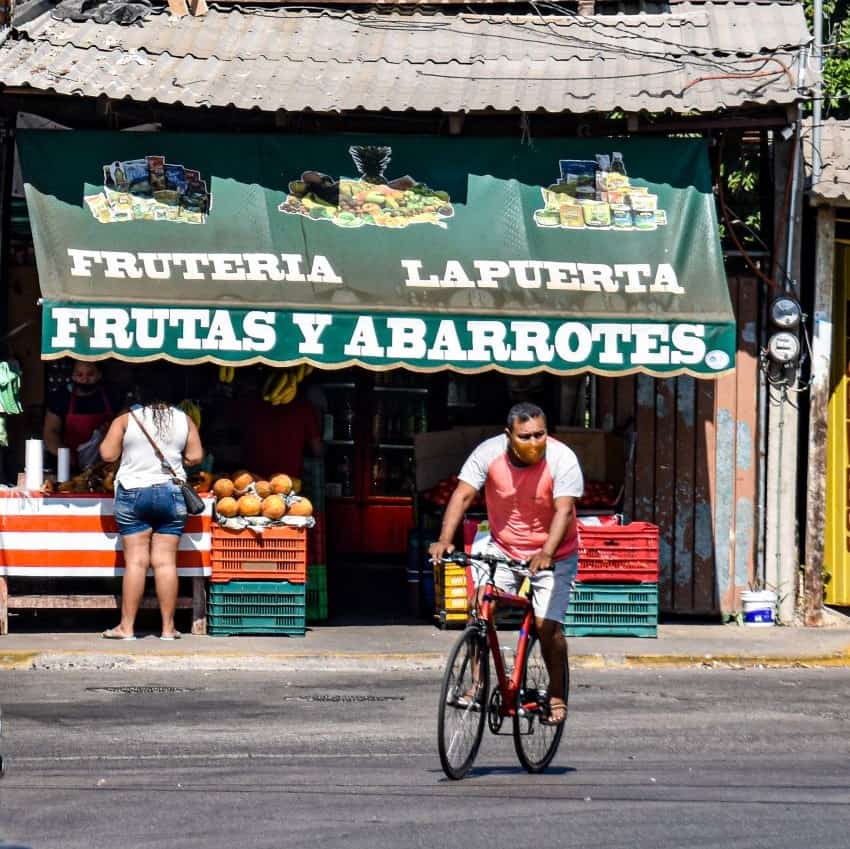Ixtapa is a lovely, well-manicured resort community just a few miles from the bustling fishing village of Zihuatanejo. A planned tourist destination constructed in the 1970s on a mangrove estuary and coconut plantation, home to popular oceanside hotel chains, it’s where to go if you want to experience the sun, surf and nightlife.
Here there are countless stores selling clothing and arts and crafts, high-end stores carrying designer labels and brands and numerous first-class restaurants and bars. There is easy convenience as well: banks and ATMs and pharmacies are on nearly every corner, as are 24-hour walk-in clinics, where for 40 pesos you can get a diagnosis and a prescription in a short time.
Large enough not to feel isolated, the area is still small enough to walk, although numerous taxis and buses will take you anywhere you want to go.
A few blocks away are numerous apartments, condos and homes for sale or rent. Beautiful private homes walled and gated dot the side streets, and there is even a marina at the far end of Ixtapa where you can dock your boat.
Two golf courses seal the claim that this is a first-class resort destination.

But, behind all that is a community known as La Puerta de Ixtapa, (La Puerta to locals), which you can access by walking, bike or scooter via a small path and gateway near the Fonatur building off Paseo de Los Viveros.
The flower boxes and uneven concrete in some places make maneuvering a little tricky, but it only takes a couple of minutes until you’re over the threshold and into what looks like a whole new world bustling with activity.
There are vendors with pushcarts and stores that sell everything from baked goods to meat, vegetables and seafood. I soon saw that I could get my hair cut, buy office supplies or hardware and have keys cut all within a few blocks’ radius. A fitness center, pharmacy and water company are housed on the same block.
Clothing stores and locals selling used clothes on the sidewalks in front of their homes are standard. There are fresh chicken and fish stands. Small restaurants and bars are plentiful, including a cute little one called Freddy’s Bar, popular not only with the locals but also with expats, some of whom live in nearby developments in the Morrocoy neighborhood.
I could smell delicious Mexican food everywhere I went and traced it to a taco restaurant called Julio’s Asadero. Two new larger grocery chains had been added since my last visit, in addition to mom-and-pop establishments.
A vast water tower dominated what I perceived to be the town center, situated in the middle of a traffic circle. Combi buses continuously run, with trips to Ixtapa and Zihuatanejo via the highway easily accessible.

The community is completely self-sufficient, and I was hard-pressed to think of anything I would want but couldn’t get in this very typical Mexican community.
Homes run the gamut from freestanding to apartment and townhouse configurations. Some look to be ancient, built from adobe bricks and left in their original form, while others are more modern and updated with flowers and shrubs. Gone are Ixtapa’s manicured streets, lawns and order of design, yet somehow they all blend in harmony in a way I find charming.
Music seems to waft over the community. Dogs and cats roam the streets. I half-expected, half-hoped to see donkeys and chickens (although I didn’t). I noticed that for the most part, the roads were free from the usual garbage you sometimes find in some communities. Judging by the number of people sweeping in front of their homes and businesses, residents take pride in keeping La Puerta clean.
Despite the differences between the two communities — including socioeconomic ones — one thing about both remains consistent: people’s smiles and friendliness.
And given that, I would have to conclude that perhaps the two worlds are not that dissimilar after all.
The writer divides her time between Canada and Zihuatanejo.
